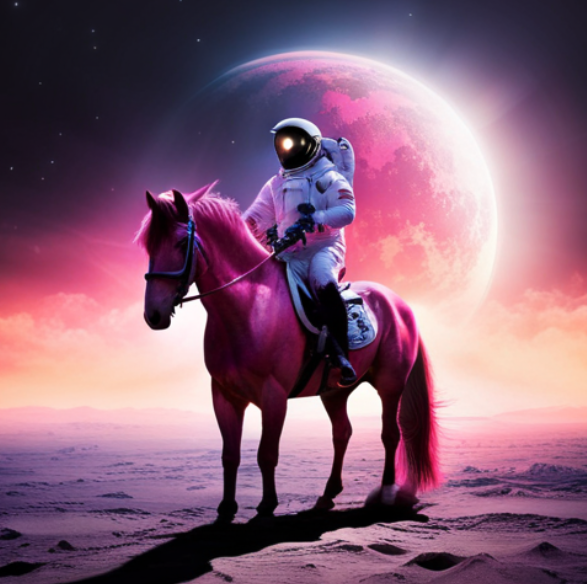In recent years, generative AI has emerged as a groundbreaking field that combines artificial intelligence and creativity. Powered by deep learning algorithms, generative AI enables machines to create original content, ranging from images and music to text and even entire virtual worlds. In this blog post, we will delve into the core concepts of generative AI, discuss the challenges it presents, and explore some intriguing use cases that demonstrate its potential.
Core Concepts of Generative AI: Generative AI is built upon the principles of deep learning and generative models. These models are trained on vast amounts of data and learn to generate new content that resembles the patterns and characteristics of the training data. The two primary types of generative models are Variational Autoencoders (VAEs) and Generative Adversarial Networks (GANs). VAEs focus on learning the underlying distribution of the training data and generate new samples from it. GANs, on the other hand, consist of a generator and a discriminator that compete against each other, resulting in the creation of realistic and diverse content.
Challenges in Generative AI: Generative AI presents several challenges that researchers and practitioners continue to tackle. One significant challenge is achieving stability and controlling the output quality of generative models. Ensuring that the generated content aligns with desired criteria and avoiding artifacts or biases requires careful training and fine-tuning. Another challenge lies in evaluation and measuring the quality of generative models objectively. Traditional metrics may not fully capture the creative or subjective aspects of generated content, making evaluation a complex task.

(image made by stability.ai)
Use Cases of Generative AI:
- Image Generation and Editing: Generative models can create stunning, realistic images, allowing for the generation of unique artwork, realistic avatars, or even realistic images of non-existent objects. They can also be used for image editing tasks, such as style transfer, where the style of one image is applied to another.
- Music Composition: Generative AI can compose original music by learning from vast collections of musical compositions. It can generate melodies, harmonies, and even entire musical pieces, catering to different styles or moods.
- Text Generation: Natural Language Processing models powered by generative AI can generate human-like text, including stories, poetry, and even dialogue. This technology has the potential to revolutionize content creation, assist in creative writing, and provide chatbot-like conversational abilities.
- Virtual Worlds and Game Content: Generative AI can create virtual worlds, landscapes, and game content, allowing for infinite possibilities in video game design. It can generate realistic environments, characters, and interactive elements, enhancing player experiences.
- Drug Discovery: Generative AI shows promise in drug discovery by generating novel molecules with desired properties. It can assist researchers in exploring vast chemical space, accelerating the discovery of potential drugs and therapeutic treatments.
Generative AI represents a fusion of artificial intelligence and creativity, pushing the boundaries of what machines can create. Through deep learning techniques and generative models, it opens up exciting possibilities in various domains, from art and music to text generation and drug discovery. However, challenges such as stability, evaluation, and ethical considerations must be carefully addressed to harness the full potential of generative AI. As the field continues to advance, generative AI holds the potential to unlock new realms of human-machine collaboration and drive innovation in ways we have yet to imagine.
Want to explore some sites that use generative AI? Try these.
- ThisPersonDoesNotExist.com: The website generates lifelike human faces that do not belong to real individuals. Each time you refresh the page, a new AI-generated face appears. Visit the website at: ThisPersonDoesNotExist.com
- ArtBreeder: ArtBreeder is an online platform that allows users to create and blend AI-generated artwork. You can explore, remix, and generate unique images by combining different art styles, subjects, and themes. Check it out at: ArtBreeder
- DeepArt: DeepArt is a platform that uses AI algorithms to transform your photos into artistic styles inspired by famous artists. You can apply various filters and create stunning artworks with just a few clicks. Give it a try at: DeepArt
- Generated Photos: Generated Photos provides a vast library of AI-generated faces that can be used for various purposes, such as marketing, advertising, or design projects. The images are completely synthetic and not associated with real individuals. Explore the collection at: Generated Photos
- NVIDIA GANverse3D: NVIDIA GANverse3D is a project that generates 3D models of objects and scenes based on 2D images. It uses generative adversarial networks (GANs) to transform 2D images into 3D representations, enabling virtual exploration and manipulation. Learn more about it at: NVIDIA GANverse3D
Please note that these examples showcase AI-generated content, but it’s important to consider the ethical implications and proper usage of such content, especially when it involves generating human-like faces or artwork.




